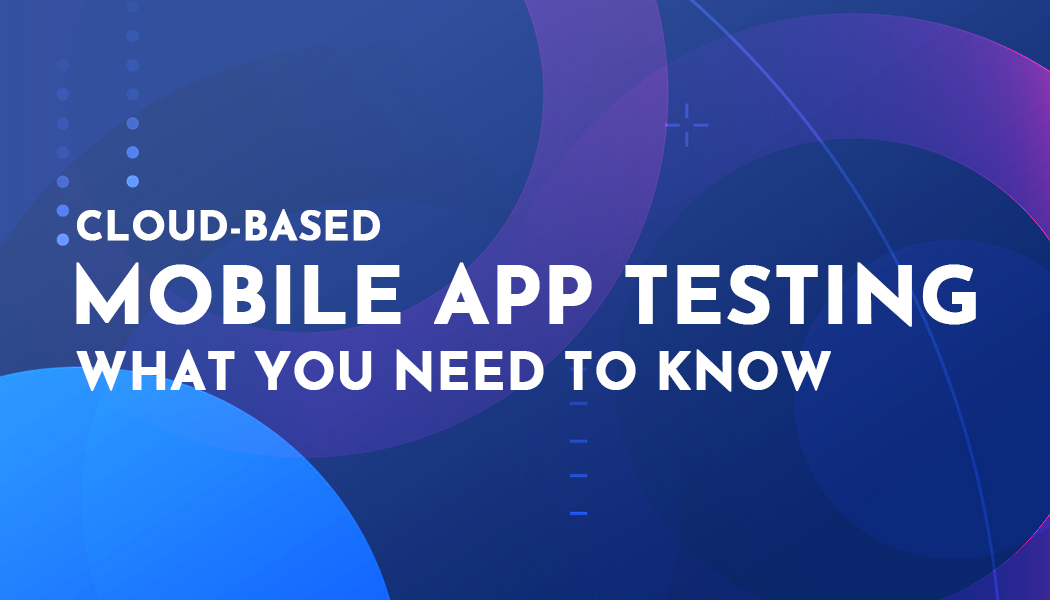Cloud-based Mobile App Testing: What You Need to Know
Designing and developing a new mobile app involves a lot of steps. Once the developers complete the initial steps and have a minimum viable product, you need to start testing it to get feedback that allows iterations and improvements. While you could test it on your computer or development machine, it is best to do this in an environment similar to the one the app will run in. Cloud-based mobile app testing allows you to do just that.
What is Cloud-based Mobile App Testing?
Cloud testing allows you to verify software quality and test mobile apps on real cloud devices. It is an alternative to on-premises testing and uses emulated or simulated mobile testing environments. These virtual environments are designed to mimic a physical device’s environment, including software and hardware. Some companies also allow you to test on real devices hosted on the cloud.
What You Need for Cloud-based Mobile App Testing
You need a few things to test your mobile apps on the cloud. The first is finding a service or business that allows you to do this. You need to understand your requirements beforehand to make it easier to find ones that provide exactly what you are looking for.
Second, you need a fast and reliable internet connection. Such a connection removes friction in the testing process, making it faster and smoother. The best business internet providers provide symmetrical speeds so it is easier to upload your app and any changes you make to the cloud.
These fast speeds are also crucial for downloading logs, testing data, and other data you need to improve the app. Lastly, they make collaboration between developers easier if you have a remote team testing the same app on the same service.
The Benefits of Cloud-based Mobile App Testing
Two of the biggest limitations to on-premises mobile app testing are cost and number of devices. Testing iOS apps is much easier than testing Android apps because there are only a few models to consider.
However, there are almost 1,300 brands that have released over 24,000 Android devices and models. Buying all these devices to test on is impossible due to the massive cost and logistics involved.
A cloud testing environment allows you to test your app on numerous devices without buying them. Some allow you to test on the most popular models, while others let you test on older operating systems if you want to support them. Such availability and flexibility are almost impossible in on- premises testing environments.
Another benefit is that you do not have to set anything up. You do not have to install older operating systems if you support them, set up the devices to work as expected, or set aside dedicated space to store them all.
Access and Team Productivity
The ability to test an app from anywhere in the world as long as you use reliable internet providers is crucial for remote teams. Additionally, the business does not have to worry about the team misplacing a phone containing the app.
By having everything they need to test an app on one platform, quality is assured, and distributed development teams can quickly and easily share all test data. They can also collaborate on adding new features, incorporating feedback, or resolving nagging issues.
No Maintenance or Updates
Maintaining or updating a few devices is relatively easy for a development team. However, this becomes laborious and time-consuming if you have more than five devices to test your app on. Cloud-based mobile app testing eliminates the need to maintain physical devices. The service will update them, their operating systems, and browsers if you need them.
Faster Test Execution
The best cloud testing platforms allow you to queue several tests to run sequentially or concurrently. The platform then runs all these tests, producing valuable logs as it does so. Since no other input or intervention is required apart from setting everything up, the platform can run batch tests much faster.
The best cloud testing platforms allow you to queue several tests to run sequentially or concurrently. The platform then runs all these tests, producing valuable logs as it does so. Since no other input or intervention is required apart from setting everything up, the platform can run batch tests much faster.
Test for Your Target Audience
Most cloud testing environments allow you to test on as many devices as possible. However, you could waste significant time and money if your target audience or market does not use some of these devices. Instead of doing this, conduct thorough research to understand your market and the devices they likely use.
Next, be strategic and optimize the testing environment to prioritize what works best with your audience and market. Doing this can also help you run tests faster, keeping in mind that speed to market is crucial in mobile app development.
No one wants to release an app that does not work correctly or not provide the user experience the target market needs. This underscores the importance of thorough testing. Cloud-based app testing environments allow you to do just that, providing numerous benefits such as faster testing, no need for updates or maintenance, and enhancing collaboration between remote development teams.




